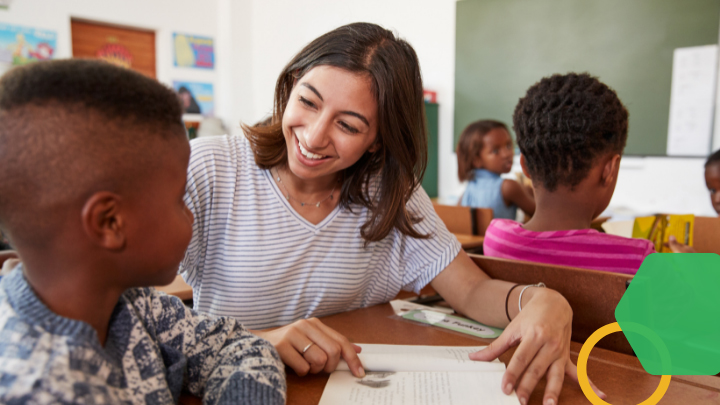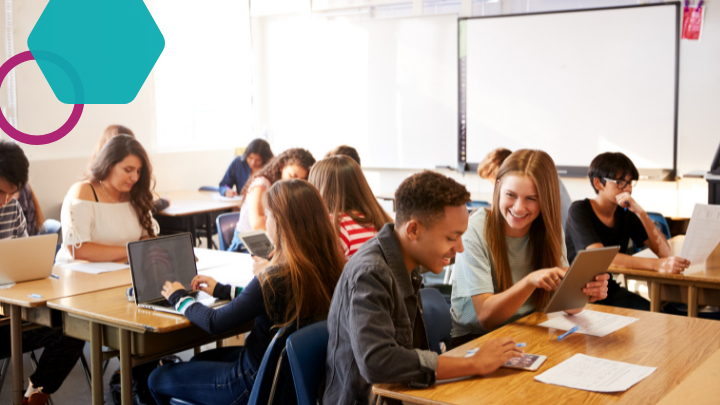in the second of a two-part blog, BetterLesson 7th grade Science Master Teacher and 2017 MSTA Middle School Science Teacher of the Year, Leigh Ann Roehm shares her journey as a teacher of students with diverse learning styles and students with disabilities sharing key teaching moves and strategies to strength-based teaching. Leigh Ann has been a middle school Science teacher for 16 years and teaches at Saline Middle School in Saline, MI.
For many teachers, December and January signify the end of a reporting or marking period. For me, this time often provides an opportunity to reflect and ask myself questions about how I can best serve the learning of all of my students.
When I reflect, I always ask myself, “What can I do to meet the needs of students with disabilities in my classroom?” This question has driven change in my classroom and has helped me to develop the two truths that I have committed to when working with students with disabilities:
Truth One: Building relationships with students is at the heart of teaching
First and foremost, I have determined that building meaningful relationships is at the heart of all I do as a teacher. It is important that I honor that non-negotiable before I push myself to make any changes to my pedagogy. However, by this point I have already spent countless hours building relationships with students and my efforts in building this foundation have provided me with insights into the unique needs and strengths of my students. While building relationships is essential to learning, building relationships alone does not create growth in learning.
Truth Two: An essential ingredient to individual student growth is effective feedback.
Beyond relationship-building, the biggest factor that makes an impact in supporting my students with disabilities is the strength and clarity of the feedback I provide them. Specific feedback for every student can make the invisible visible. Students with disabilities enter our classrooms with a wide array of challenges that can provide roadblocks to learning. In order to help guide students with disabilities through their learning journey, it is crucial that we provide students with feedback that is specific to them as individuals. Not every student’s path to learning will be the same; therefore, the feedback they receive needs to be as unique as they are as learners.
Here are some strategies that I often use to provide strong feedback to my students:
Create learning targets with clear expectations and criteria for mastery.
Creating learning targets is more than just having a learning target identified in a lesson. It is important to shift the mindset in order to see that the learning target is for the student, not for the teacher. With that in mind, the child needs that learning target visible in a place he/she can reference. Moreover, these targets should include clear expectations or criteria explaining what mastery looks like. This will be the basis for the feedback you give throughout the unit or lesson. (Here is an example of criteria for mastery in one of my student unit plans.)
Allow for different entry points using progress and mastery tracking.
Not all students are ready for the same target or to begin at the same place. Students with disabilities need targets that are appropriate for their place in their learning journey. And, having students work at their own pace with individual targets allows you the opportunity to provide personalized feedback to each of your students. Consider implementing progress and mastery tracking in your classroom to develop personalized pathways for students. Communicate with your teacher consultants and examine IEPs and 504 plans to inform your targets and ensure they are appropriate for the individual learner.
Involve students in the creation of mastery levels in order to create common feedback language.
When starting a new learning target, provide students with several pieces of student work varying in mastery. (I always try to choose at least one example that highlights the common errors that students typically make as well as one example that demonstrates mastery.) Then, have students sort those pieces of work in order of “Most Effective” to “Least Effective” in groups. After completing this task, have the class develop the criteria for mastery for that learning target (to learn more about how to do this, consult the Involving Students in the Creation of Mastery Levels and Rubrics strategy in the BetterLesson lab). Write these criteria on a poster to create an anchor chart to display in your room. Now, your class has established language for feedback that is student driven! Moreover, students with disabilities often do not know what mastery work looks like. Allowing them to view an exemplar is a powerful way to give them a model of understanding when first introducing a learning target. (Check out this strategy in action in the closure section of this lesson.)
All formative assessments should be clearly tied to learning targets.
Design the formative assessments with the learning targets in mind, and even better, write the learning target on the formative assessment. The questions or task in the assessment should allow the student to demonstrate the criteria for mastery that you identified for your learning target.
Give S.T.R.O.N.G feedback.
When meeting with students about their work to provide feedback, I like to use the acronym STRONG to guide my feedback. These are all things that I have found to impact the effectiveness of the feedback I give.
(S) Start positive
Set the tone with compliment about their work.
(T) Tie your feedback to the learning target
The criteria for mastery that you create with each learning target is at the heart of your feedback. Your feedback should be tied to the target. Avoid clouding your feedback by addressing items that do not relate to the target at hand.
(R) Relate to the student’s work
One easy trap to fall in when giving feedback is to simply tell the students what the right answer looks like. Instead, refer to specific choices the students made in their work that do or do not demonstrate the criteria for mastery.
(O) Offer a strategy for improvement
While informing the student about which criteria of a learning target they need work on is important, growth won’t happen unless you provide the student with a strategy, scaffold, or new way of thinking about that target.
(N) Nothing generic
While “Great job!” and “Awesome work!” might be motivators, they are not feedback. Don’t eliminate these positive expressions from your vocabulary. Just realize that they are not a form of feedback. Feedback must inform the student about which criteria they have mastered or are still working on in relationship to the learning target.
(G) Growth mindset-driven speak
Comments like “I’ve told you this three times already.” and “You should be getting this by now.” will cause students to believe your feedback isn’t valuable. Instead, celebrate feedback as an opportunity to learn. Be sure to create a culture that promotes mistakes as opportunities to grow.
Provide feedback in conferences or to micro groups of students.
Create a formative assessment that is tied to a learning target that can fit on a slip of paper (like a half sheet or a third of a sheet). Once students complete the formative assessment, sort the student work into stacks of students that will require similar feedback. This will help you to form micro-groups to provide feedback. You don’t even have to write on the feedback on the paper! Just sort it. The next day, meet with each micro-group and provide them all with the feedback they need in small groups or conduct a small group session in order to give targeted support to small groups of students. To see these strategies in action, consult my Microscope Mania Day lesson and/or this video of me engaging in conferencing with my students.
Implement feedback checkpoints during self-directed work time.
It can be overwhelming to think that you need to write out STRONG feedback on all of your students’ work. Instead, create checkpoints during tasks that require students to meet individually with you for a self-assessment conference. For example, you could instruct students that “after completing two lab stations” or “after completing #5” they need to bring their work to you in order to reflect on it and receive STRONG verbal feedback from you. Providing feedback throughout a task and not just at the end of a task, and also allowing students to self-assess their progress toward mastery are excellent ways to show that feedback for growth is valued in your classroom.
Consider making formative assessments not “count” towards the final grade.
When I made this change in my classroom, the entire culture of learning changed. Formative assessments are designed to provide feedback. As soon as the pressure of the “grade” is removed, students can trust in the idea that you are focused on growth and are truly providing them an opportunity to use feedback to improve. Removing the grade is a way to celebrate mistakes and promote risk taking.
Learning is a unique journey for every student. When students are provided with clear targets and meaningful feedback about where they stand in relationship to that target, teachers can help to create an individual roadmap for each student along their journey.







